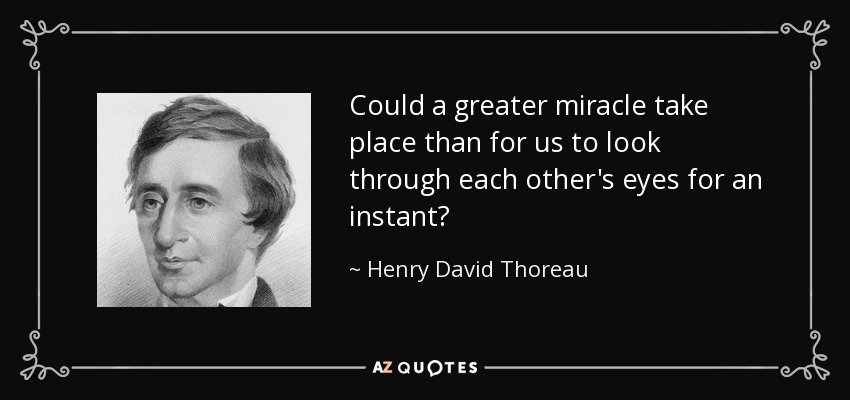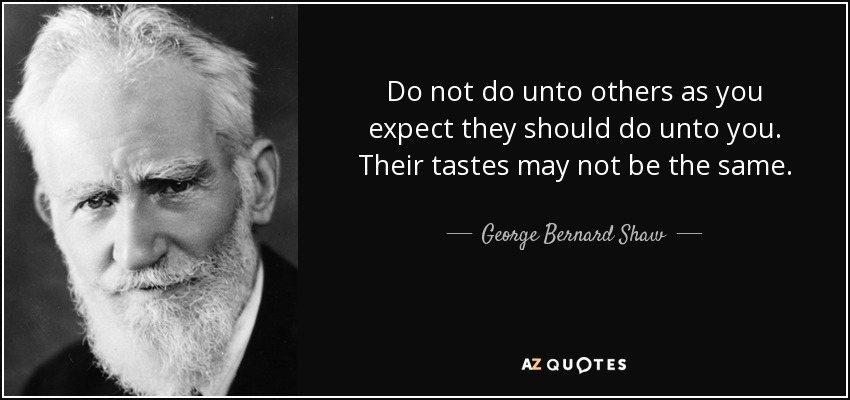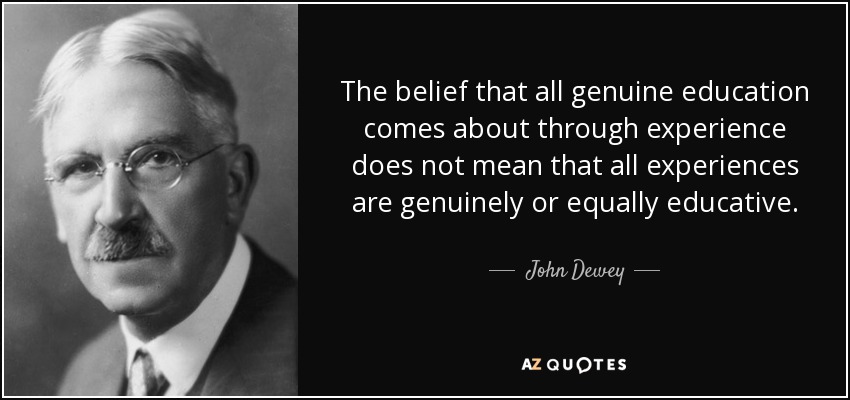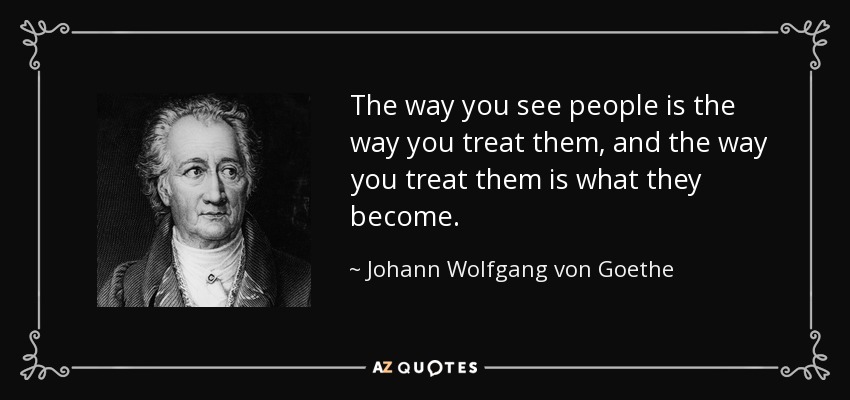Click here to return to Blog Post Intro
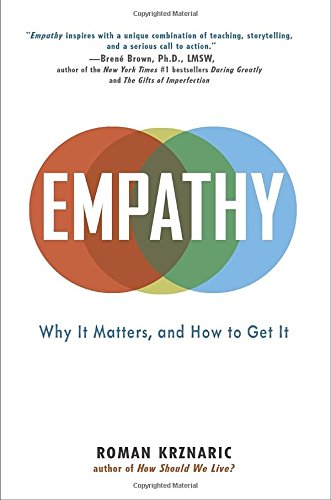
Empathy: Why It Matters, and How to Get It by Roman Krznaric (2014)
The Radical Power of Empathy: The Revolution of Human Relationships
There is a historic wave of empathy sweeping across our country—challenging our highly individualistic, self-obsessed cultures, in which most of us have become far too absorbed in our own lives to give much thought to anyone else.
Empathy is the art of stepping imaginatively into the shoes of another person, understanding their feelings and perspectives, and using that understanding to guide your actions. So empathy is distinct from expressions of sympathy—such as pity or feeling sorry for somebody—because these do not involve trying to understand the other person’s emotions or point of view. Nor is empathy the same as the Golden Rule, “Do unto others as you would have them do unto you,”
Evolutionary biologists have shown that we are social animals who have naturally evolved to be empathic and cooperative. Child psychologists learned that even three-year-olds are able to step outside themselves and see other people’s perspectives. It is now evident that we have an empathic side to our natures that is just as strong as our selfish inner drives.
Highly empathic people have something in common. They make an effort to cultivate six habits—a set of attitudes and daily practices that spark the empathic circuitry in their brains, enabling them to understand how other people see the world. There are habits to suit every temperament and personality, whether you are an extrovert or an introvert, a risk-taking adventurer or a connoisseur of intimacy and subtle emotions.
The Six Habits of Highly Empathic People
- Switch On Your Empathic Brain: Shifting our mental frameworks to recognize that empathy is at the core of human nature and that it can be expanded throughout our lives.
- Make the Imaginative Leap: Making a conscious effort to step into other people’s shoes—including those of our “enemies”—to acknowledge their humanity, individuality, and perspectives.
- Seek Experiential Adventures: Exploring lives and cultures that contrast with our own through direct immersion, empathic journeying, and social cooperation.
- Practice the Craft of Conversation: Fostering curiosity about strangers and radical listening and taking off our emotional masks.
- Travel in Your Armchair: Transporting ourselves into other people’s minds with the help of art, literature, film, and online social networks.
- Inspire a Revolution: Generating empathy on a mass scale to create social change and extending our empathy skills to embrace the natural world.
In the lead-up to the 2008 U.S. presidential election, Barack Obama made empathy one of his major campaign themes. He said, “There’s a lot of talk in this country about the federal deficit. But I think we should talk more about our empathy deficit—our ability to put ourselves in someone else’s shoes, to see the world through those who are different from us—the child who’s hungry, the laid-off steelworker, the immigrant cleaning your dorm room. . . . We live in a culture that discourages empathy, a culture that too often tells us that our principal goal in life is to be rich, thin, young, famous, safe and entertained.”
A recent study at the University of Michigan revealed a dramatic decline in empathy levels among young Americans between 1980 and today, with the steepest drop being in the last ten years. Psychologists have also noticed an “epidemic of narcissism”: one in ten Americans exhibit narcissistic personality traits that limit their interest in the lives of others.
A Cheyenne Native American proverb advises, “Do not judge your neighbor until you walk two moons in his moccasins.”
Habit One: Switch On Your Empathic Brain
The first habit of highly empathic people is to “switch on your empathic brain,” which means embracing a more sophisticated understanding of human nature.
Adam Smith may have claimed, in The Wealth of Nations, that the pursuit of self-interest was good for society, but in another book published seventeen years earlier, The Theory of Moral Sentiments (1759), he offered a more complex and complete depiction of human motivation, which was in part a direct riposte to Hobbes’s pessimistic view of the state of nature. “How selfish soever man be supposed,” Smith began his book, “there are evidently some principles in his nature, which interest him in the fortune of others, and render their happiness necessary to him, though he derives nothing from it, except pleasure of seeing it.” This is followed by the world’s first fully developed theory of empathy—which at the time was called “sympathy”—where Smith argued that we have a natural capacity for stepping into other people’s shoes, which he memorably described as “changing places in fancy with the sufferer.”
People often use the terms empathy and compassion interchangeably. While they overlap in some ways, they are distinct concepts. Empathy involves stepping into someone’s shoes, gaining an understanding of their feelings (the affective aspect) and perspectives (the cognitive aspect), and using that understanding to guide our actions. The Latin origin of the word compassion means “to suffer with another.” This is different from empathy, which can include sharing the joys of another as well as their suffering.
There is overwhelming agreement among the experts that our personal empathy quota is not fixed: we can develop our empathic potential throughout our lives. Empathic ability is a bit like musical ability—part nature and part nurture. Most people are able to expand their capacity for empathy throughout their lives—especially their cognitive or perspective-taking empathy—by practicing mindful attention toward other people’s feelings and experiences.
Habit Two: Make the Imaginative Leap
If empathy is so good for us, and if it is wired deep into our brains, why don’t we do it more? The reason is that we face four fundamental social and political barriers that block the full expression of our empathic imaginations. Their names? Prejudice, authority, distance, and denial.
We must explore the four barriers to empathy, and prepare ourselves to defy them:
- Prejudice: Think to yourself how often you have been plain wrong about someone because you were looking at them through the distorting lens of prejudice and stereotype. What all stereotyping has in common, whether it is a product of politics, religion, nationalism, or other forces, is an effort to dehumanize, to erase individuality, to prevent us from looking someone in the eye and learning their name. The consequence is to create a culture of indifference that empathy finds difficult to penetrate.
- Authority: We must accept that the disposition to obey authority lies within most of us. What makes highly empathic people unusual is their desire and capacity to defy authority when empathic action calls for it.
- Distance: We might fail to empathize with those who are socially distant, even if they live next door. That is why highly empathic people strive to overcome this barrier and make a sustained effort to look through the eyes of strangers and people who are outside their “in-group.”
- Denial: We suffer from “compassion fatigue” or “empathy fatigue,” a state of psychological exhaustion brought about by the barrage of depressing news stories and images from every corner of the planet. We have now seen too many photos of hungry, gaunt children for them to make much of a difference any more. We have become, in the words of Pink Floyd, comfortably numb.
To defy these barriers and turn ourselves into highly empathic people, we need to take these three steps:
- Humanize the “Other”: If you know the people who work with you, you behave toward them like human beings. The act of empathizing begins with looking someone in the eye, giving him a name, and recognizing his individuality. It is about acknowledging his humanity in defiance of prejudices and stereotypes. In his book I and Thou, Buber describes two forms of relationship we can engage in. “I–Thou.” This involves treating another person as a unique being equal to yourself and attempting to look at the world through their eyes and to comprehend their thoughts and feelings. The final strategy for humanizing our imaginations is to ask ourselves some penetrating questions concerning the assumptions we make about people, to boost our self-awareness and enable us to identify prejudices that might be quietly lurking in our minds.
- Discover What You Share…and What You Don’t: Highly empathic people are engaged in a constant search for what they share with other people, even when those people appear alien to them. One of the best known moral axioms in human history, the Golden Rule: “Do unto others as you would have them do unto you.” During the Axial Age (800–300 B.C.E.), the world’s major spiritual traditions, including Buddhism, Confucianism, and Judaism, all developed some version of the Golden Rule. It also appears in Hindu classics such as the Mahabharata and is a central tenet of Christian thought. The Golden Rule is often described as an “empathic principle.” But should it be? We need to go beyond the Golden Rule and turn to what has become known as the Platinum Rule: “Do unto others as they would have you do unto them.” Highly empathic people do not simply try to discover what they share with others but also actively attempt to understand what they don’t.
- Empathize with the Enemy: We should try to extend our empathy beyond the usual suspects—the poor and marginalized, the voiceless and powerless—and be more adventurous in our efforts to step into other people’s shoes. We can each ask ourselves this question: Who are my three greatest enemies, and how could I use empathy to start bridging the divide between us? No matter what a person’s politics, religion, or moral code might be, the process of empathizing does not destroy the possibility for moral judgment. You can gain an understanding of someone’s worldview without having to agree with his beliefs or principles.
Habit Three: Seek Experiential Adventures
Consider method actors. They dive into the extreme sport of experiential empathy. One of the best ways to step into someone else’s shoes is to have direct experience of their life, so it becomes etched onto your skin and psyche.
Originally published in 1961, Black Like Me remains a standard text on high school and college syllabuses across America. At its heart is white journalist John Howard Griffin’s resounding message about the value of empathy: “If only we could put ourselves in the shoes of others to see how we would react, then we might become aware of the injustice of discrimination and the tragic inhumanity of every kind of prejudice.”
It is vital to put ourselves in the shoes of people living in poverty, otherwise the rights of the minority or the less vocal will always be neglected.
Today, we think of Nelson Mandela as an archdeacon of empathy. Perhaps no other political leader has made such a concerted effort to step into the shoes of his adversaries and treat them with humanity. Mandela understood that empathizing with the white population was essential to creating national unity and political stability in the post-apartheid era and possibly to prevent a descent into civil war.
By the late 1980s, though, Mandela was beginning to see that it was empathy, not guns, that would be the most effective political tool for constructing a post-apartheid South Africa. He realized that he needed to build trust with the government, and work with them rather than against them. He had also developed a deeply humane, empathic attitude toward his former adversaries, which guided his actions in the years following his release: “In prison, my anger toward whites decreased, but my hatred for the system grew. I wanted South Africa to see that I loved even my enemies while I hated the system that turned us against one another.”
One nineteenth-century tour operator described the benefit of travel this way, “To travel is to dispel the mists of fable and clear the mind of prejudice taught from babyhood, and facilitate perfectness of seeing eye to eye.”
Religion, nationalism, and political ideologies all have dark histories of creating social division and turning people against one another. They must be treated with caution. “We” is a dangerous pronoun because it reinforces the distinction between “them” and “us.” We should strive to create more interdependent societies, where mutual aid and social cooperation can help our empathic selves to flourish.
When it comes to developing empathy, it is by stepping into the world of experience—through immersions, exploration, and cooperation—that we can make huge leaps in our ability to understand the lives of others.
Habit Four: Practice the Craft of Conversation
Conversation is one of the essential ways in which we come to understand the inner emotional life and ideas of others. Conversation and empathy are intimately intertwined: making the effort to comprehend another person’s perspective can help bring an otherwise unremarkable dialogue to life, while conversation itself has the power to forge empathic connection.
Highly empathic people bring six unusual qualities to their conversations: curiosity about strangers, radical listening, taking off their masks, concern for the other, a creative spirit, and sheer courage.
In the 1930s, the self-help writer Dale Carnegie popularized communications techniques in his book How to Win Friends and Influence People. Carnegie’s advice included smiling a lot and repeating people’s names as you speak, so they think you like them and are really listening to them.
For the Tribes of New Guinea, people generally fall into one of three groups:
- “Friends” are members of your own band or village, whom you can trust.
- “Enemies” are members of neighboring bands or villages with which your band is on hostile terms.
- “Strangers” are unknown individuals from distant bands. If you do happen to encounter a stranger in your territory, you have to presume that person is dangerous because they are likely to be scouting in order to raid your group or kidnap your womenfolk. In other words, any stranger is a potential enemy and should be treated with extreme caution. Contemporary culture reflects this attitude, and we are often wary of engaging strangers in conversation.
If you’re an aspiring empathist, take this advice: “Don’t be the examiner, be the interested enquirer.” And how can you ignite your curiosity about strangers? Have a conversation with a stranger at least once a week and really make an effort to understand the world inside their head.
Whatever your personality type, it is essential to realize that most people actually want to talk about the things that matter to them. Offer them the space, and they will open themselves to you.
A common malady in our society is narcissistic one-upmanship. When a friend reveals their tale of unrequited love, many people cannot help outdoing it with their own even more sorrowful tale (“If you think that’s bad, just hear what happened to me . . .”). One of the most useful skills for getting beyond these obstacles is listening. Personal development guru Stephen Covey, who points out that while we spend years learning to read, write, and speak, most of us dedicate little time to becoming better listeners.
We live in a culture where making yourself vulnerable—exposing your uncertainties, taking emotional risks—is considered a failing, and something that most of us would rather avoid. Emotions researcher Brené Brown turns this attitude on its head, arguing that vulnerability is actually good for us: We’re brought up believing and being taught and seeing it modeled in our parents, that vulnerability is weakness, and that going out into the world without armor is basically asking for the hurt that you get. But vulnerability is not weakness—it’s the greatest measure of our courage.
It is precisely when we expose our vulnerability, perhaps in a relationship or at work, that we have experiences that bring purpose and meaning to our lives. Doing something risky—like asking for help, sharing an unpopular opinion, falling in love, admitting to being unconfident or afraid—may make us feel vulnerable, but it can also result in deeper relationships, creative breakthroughs, heightened joy, release of anxiety, and greater empathic connection.
Brown points out that we need to forge work cultures where vulnerability, and the empathy that it helps to generate, are not just accepted but positively admired. She explains, “When vulnerability is not tolerated in the workplace, we can forget about innovation, creativity, and engagement. Those are all functions of vulnerability. You will never be able to convince me that being vulnerable and human, and getting good work done, are mutually exclusive. I just don’t buy that argument. It’s a false dichotomy.”
Empathy is an absolute prerequisite for good teamwork and organizational leadership. Anyone who does not master the complex social skill of guiding his or her behavior through applied empathy will be marginalized. If their team is to succeed, they must master teamwork, which in turn rests on applied empathy.
We need to remain vigilant of our intentions when communicating with others. If we let self-interest get the better of us, and conversation becomes a means for dominating, manipulating, and getting our own way, then we are betraying the empathic ideal. On the other hand, if our conversations are led by concern for others, then our empathizing will bear the mark of integrity.
One study at the University of Arizona revealed that people with high levels of life satisfaction or “happiness” have twice as many substantive conversations (for example, about love, religion, politics) and engage in only one-third as much small talk (such as gossip, talking about the weather) than those with low life satisfaction. The research suggests that conversation, like empathy, is good for us.
Habit Five: Travel in Your Armchair
“It was through books that I first realized there were other worlds beyond my own; first imagined what it might be like to be another person,” wrote the novelist Julian Barnes.
As political scientist Gary Olson contends, governments try to shield us from photographs of the violent realities of war because they worry that our empathic responses could jeopardize support for military intervention. Consider this exchange between two “enemies” in war, who met in a foxhole:
I didn’t want to kill you. I tried to keep you alive. If you jumped in here again, I wouldn’t do it. You see, when you jumped in here, you were my enemy—and I was afraid of you. But you’re just a man like me, and I killed you. Forgive me, comrade. Say that for me. Say you forgive me! . . . Oh, no, you’re dead! Only you’re better off than I am—you’re through—they can’t do any more to you now. . . . Oh, God! Why did they do this to us? We only wanted to live, you and I. Why should they send us out to fight each other? If they threw away these rifles and these uniforms, you could be my brother.
How does this all relate to developing our empathic selves? If we listened solely to critics like Susan Sontag, we might place little hope in photography as a way of stepping into other people’s lives. But we need to recognize that it continues to be a potent means of helping us understand the pain and suffering of strangers. Photographs bring home to us the reality of physical suffering with a literalness and irrefutability that neither literature nor painting can claim. . . . Photographs excel, more than any other form of either art or journalism, in offering an immediate, viscerally emotional connection to the world.
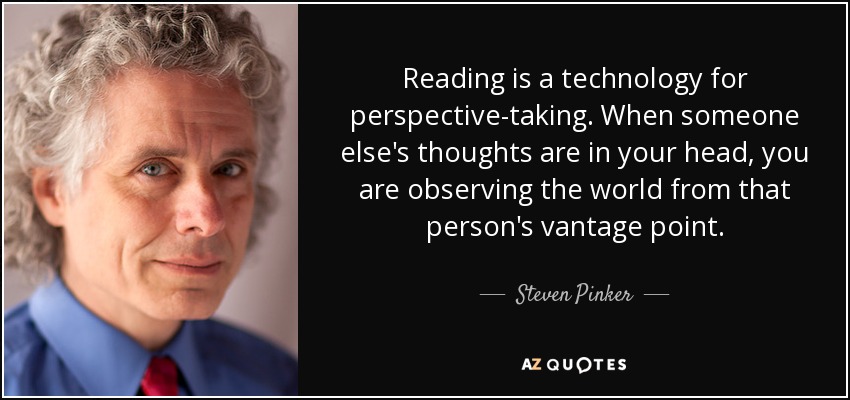
According to social scientist Jeremy Rifkin, online culture may be leading us toward a truly empathic civilization. “New developments in internet connections,” he argues, make it “possible to imagine a paradigmatic shift in human thought and a tipping point in global consciousness in less than a generation. . . . The potential to experience empathic sensibility and to take it to a global level is now within reach.”
Social media, and digital technologies more broadly, pose as many threats to empathy as they offer opportunities. Stanford psychiatrist Elias Aboujaoude argues that the problem is not so much that digital culture “flattens” our personality but that it splits us in two. We gradually develop an “e-personality” or “e-identity” that is distinct from our offline personality: “for every real being with an Internet hookup, there exists now a virtual version living side by side.” Being online is fast becoming our default state, with a growing proportion of people spending over half their waking hours wired into digital technology: the typical U.S. teenager clocks up nearly eight hours each day online, updating their status, consuming media, and texting their friends.
While I would like to be more optimistic, there is mounting evidence that the digital revolution, in its present form, is failing to send us on the path toward an empathic civilization. Rather, we may be witnessing a revival of the “Me Decade” of the 1970s.
Habit Six: Inspire a Revolution
Empathy can be as much a collective phenomenon as an individual one. The culmination of our empathic journeys is to help create these waves of collective empathy that can play a part in tackling the great problems of our age, from poverty and inequality to armed violence and environmental collapse. The idea of collective empathy is especially relevant today because it counterbalances the highly individualistic focus of modern self-help culture, which tends to view the search for happiness or well-being as a personal pursuit concerning our own ambitions and desires, rather than one that involves working with others toward common goals.
We are creatures whose empathic selves are fully realized by acting together to create change. Let’s consider the three waves of empathy that have transformed Western history:
- The Rise of Humanitarianism in the Eighteenth Century: Psychologist Steven Pinker suggests that an “expansion of empathy” has been one of the major causes of the marked decline in violence over the past half a millennium, including judicial torture, slavery, and the persecution of minorities. The first wave, which took place in the eighteenth century (and continued into the nineteenth), saw the rise of humanitarian organizations and movements across Europe. Abolitionists, argues their historian Adam Hochschild, “placed their hope not in sacred texts but in human empathy.” They aimed to give members of the public a vivid, almost visceral sense of what it might be like to be a slave. The result of the Quakers’ determined work was that tens of thousands of people had their minds opened to empathize with the hardships faced by slaves. Empathy is at its most powerful when it is embedded as part of a community ethos. Quakers today continue to advocate stepping into other people’s shoes, just like John Woolman and Elizabeth Fry: the word empathy has a prominent place in the mission statements of many Quaker organizations.
- The Expansion of Rights after World War II: The civil rights movement in the United States in the 1950s and 1960s provides a compelling example of the political impact of empathy. Martin Luther King Jr. explicitly drew on empathic thinking when making the case for racial equality. We need to appreciate, he argues, that “even if we don’t empathize with distant strangers, their lives have the same value as the lives of those we love.”
- Deepening Personal Relationships in the Age of Neuroscience: The latest wave has made its mark in three promising new realms: the teaching of empathy skills to schoolchildren; resolving and mediating conflict situations; and generating empathy for future generations to help tackle climate change. Although still just taking off, it has been fueled by the research in neuroscience and evolutionary biology that has raised awareness of our empathic brains and by the growing evidence from child and educational psychology that empathy can be learned and nurtured throughout our lives. This third wave is also having an impact through a growing number of peace-building and mediation projects that explicitly use empathy to help resolve conflict situations and that are scaling it up into a powerful collective force. Empathic dialogue is the key to ending the conflict: “We must be prepared to listen to ‘the other.’ Because if we will not listen to the other’s story we won’t be able to understand the source of their pain and we should not expect the other to understand our own.” The idea of making personal sacrifices now for the benefit of people who do not yet exist and who we will never meet is a challenging one. This is partly due to the short-term thinking that pervades Western culture, where politicians can barely see beyond the next election, and corporations beyond the next quarterly results. We lack the wisdom of the Iroquois maxim, “In every deliberation, we must consider the impact on the seventh generation . . . even if it requires having skin as thick as the bark of a pine.” The attempt to extend the boundaries of the third wave of empathy across species is proving controversial because for the last century psychologists have almost exclusively thought about empathy as a purely human-to-human phenomenon.
The Future of Empathy
Empathy is becoming the watchword for a new generation of activists campaigning on issues such as economic inequality, disability rights, climate change, and gender justice. The unprecedented popularity of empathy is reflected in data showing that between 2004 and 2013 the use of the word empathy as an Internet search term doubled, while over the same decade searches for sympathy dropped by around 30 percent.
We need a better balance between gazing inward and looking outward, between introspection and outrospection.
We need to initiate Empathy Conversations. There is a menu of questions about the six habits of highly empathic people that you can take as a starting point for discussions with friends, family, colleagues, and strangers.
- Switch On Your Empathic Brain – How did experiences in your childhood and youth shape your capacity to empathize? What do you think tips the balance between Homo self-centricus and Homo empathicus in human beings, and why?
- Make the Imaginative Leap – Think of a time when you really tried to step into somebody else’s shoes. What difference did it make? What kinds of people do you have trouble empathizing with, and why? How could you use empathy to start bridging the divide between you?
- Seek Experiential Adventures – What would be your ideal vacation project for immersing yourself in the life of someone from a different cultural or socioeconomic background from your own? Think of an individual whose political or religious views you disagree with. What experiential adventure could you go on to better appreciate their viewpoint?
- Practice the Craft of Conversation – What has been the most surprising and stimulating conversation you have ever had with a stranger? What is the biggest source of tension or misunderstanding in your family life? How could you initiate a conversation to better understand the feelings and needs of those involved?
- Travel in Your Armchair – Which film, novel, or other artwork has done most to expand your empathy and affect how you act in the world? How is digital culture affecting your personality—your mind, character, and relationships? Would a digital diet help or hinder your ability to empathize?
- Inspire a Revolution – Think of a social or political cause you really care about. How could you call on empathy to get more people to understand it and take action on it? What single change could you make in your life to deepen your empathic connection with the natural world? And Finally Which of the six habits would you most like to develop more in the future, and what first practical step could you take in the next forty-eight hours to do so?
We also need something more daring. That is why Krznaric’s ambition is to found the world’s first Empathy Museum. Together with an Empathy Library, Empathy Conversations, and the ongoing work of empathy activists around the planet, these museums will be fueling the revolution of human relationships that we so urgently need!


